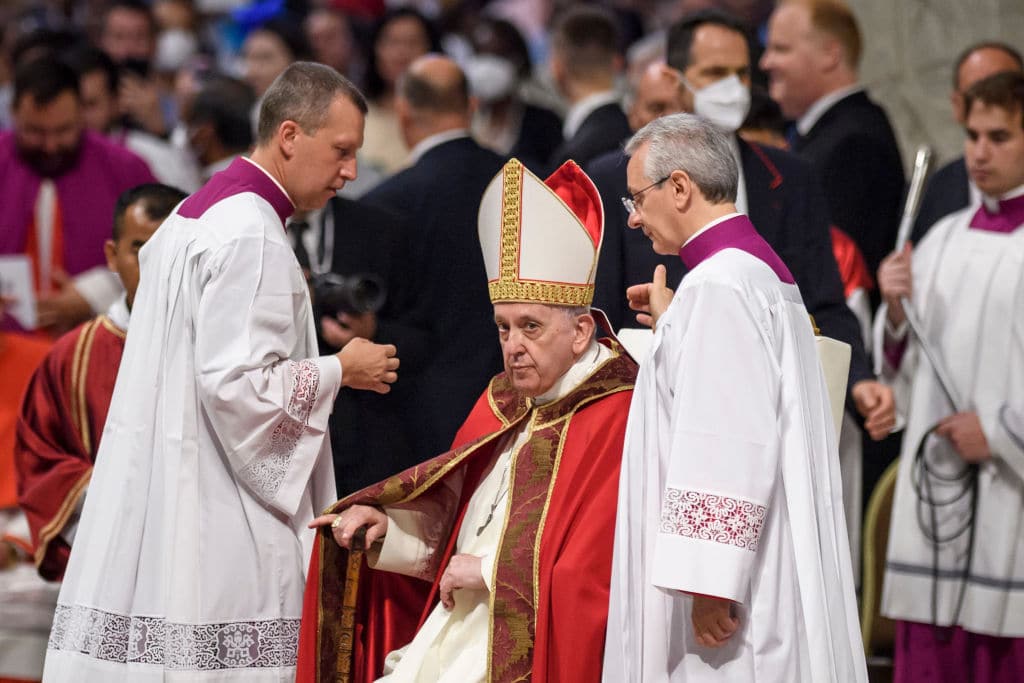The unintended consequences of Desiderio desideravi
Are the modern rites really what Vatican II intended, asks Hugh Somerville Knapman OSB The post The unintended consequences of Desiderio desideravi appeared first on Catholic Herald.

The non-acceptance of the liturgical reform, as also a superficial understanding of it, distracts us from the obligation of finding responses to the question that I come back to repeating: how can we grow in our capacity to live in full the liturgical action? How do we continue to let ourselves be amazed at what happens in the celebration under our very eyes? We are in need of a serious and dynamic liturgical formation.
— Desiderio Desideravi, 29 June 2022
Having been fairly uninterested in liturgy until relatively recently, in the last twelve months Pope Francis has shown a marked increase in liturgical interventions. The Holy Father’s personal interest in liturgy per se probably remains fairly low; his recent engagement with it has more to do with the Second Vatican Council and enforcing its ongoing acceptance seventy years after its closing sessions. His Holiness has now identified the post-conciliar liturgical forms as one of the touchstones of authentic conciliar adherence.
The Pope’s latest encyclical, Desiderio Desideravi, “On the Liturgical Formation of the People of God”, nods at those who complained after Traditionis Custodes last July that Rome had tightened the screws on the old rites—which are invariably celebrated with meticulous rubrical fidelity—while seeming to turn a wholly blind eye to liturgical abuses of the gravest degree in celebrations of the new rites. The Holy Father now makes clear he expects “every rubric to be observed”, and identifies two negative tendencies in the liturgical landscape of today: “the non-acceptance of liturgical reform”, and “a superficial understanding of it.”
His Holiness calls, in response, for a “serious and dynamic liturgical formation” to deal with these tendencies. Some of the points Pope Francis makes are not unreasonable, especially the need for liturgical formation for a generation of Catholics formed largely by liturgical praxis marked by inconsistency in application, a lack of doctrinal substance, and a disconnection from liturgical history. Unfortunately his proposed remedy seems doomed to fail in the goal he sets for it.
The Holy Father seeks a full acceptance of the liturgical documents of the Second Vatcian Council Vatican II. Yet the programme he sets forth—a renewed and deepened liturgical catechesis—is precisely what has led so many (especially young) Catholics to question the equation of the modern liturgical rites as they have experienced them with the actual liturgical documents of Vatican II. In short, many discover a divergence between Vatican II’s constitution Sacrosanctum Concilium and the rites later developed by a committee acting in its name.
The problem is primarily ecclesiological. I do not see how it is possible to say that one recognizes the validity of the Council—though it amazes me that a Catholic might presume not to do so—and at the same time not accept the liturgical reform born out of Sacrosanctum Concilium, a document that expresses the reality of the Liturgy intimately joined to the vision of the Church so admirably described in Lumen Gentium.
A constant repetition of the mantra that the modern rites are the liturgy that Vatican II actually called for is no longer sufficient to garner acceptance. The difference between them is too great and too obvious for those who have undertaken already the liturgical formation that His Holiness now rightly advocates. For example, anyone who has studied the Order of Mass of 1965, the first significant conciliar reform, will find the clear conformity with the conciliar decree that cannot be found in the new Mass of 1970.
Full acceptance of the modern liturgical forms cannot be definitively secured by the “serious and dynamic liturgical formation” Pope Francis calls for in Desiderio Desideravi, and this is its fatal flaw. You can have a proper liturgical formation, or you can accept the modern liturgical rites as being those mandated by Vatican II; but you cannot have both. Perhaps unintentionally—although one never quite knows with the present Successor of Peter, on whose feast day the latest papal document appeared—the Holy Father has opened up a fundamental question.
Are the modern liturgical forms actually those that the Council mandated, or a new creation entirely? The fuller and deeper liturgical formation that that Pope now calls for may not necessarily secure the answer he seems so fervently to desire. His Holiness may be able to enforce—to some degree—an external acceptance of the modern rites, but in doing so he may risk further alienating those faithful Catholics who find much beauty and grace in the historic rites of the Church.
Dom Hugh Somerville Knapman is a monk of Douai Abbey

The post The unintended consequences of Desiderio desideravi appeared first on Catholic Herald.














